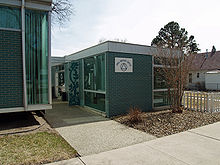The Big Book, the Twelve Steps and the Twelve Traditions

To share their method, Wilson and other members wrote the initially-titled book, Alcoholics Anonymous: The Story of How More Than One Hundred Men Have Recovered from Alcoholism, from which AA drew its name. Informally known as "The Big Book" (with its first 164 pages virtually unchanged since the 1939 edition), it suggests a twelve-step program in which members admit that they are powerless over alcohol and need help from a "higher power". They seek guidance and strength through prayer and meditation from God or a Higher Power of their own understanding; take a moral inventory with care to include resentments; list and become ready to remove character defects; list and make amends to those harmed; continue to take a moral inventory, pray, meditate, and try to help other alcoholics recover. The second half of the book, "Personal Stories" (subject to additions, removal and retitling in subsequent editions), is made of AA members' redemptive autobiographical sketches.
In 1941, interviews on American radio and favorable articles in US magazines, including a piece by Jack Alexander in The Saturday Evening Post, led to increased book sales and membership. By 1946, as the growing fellowship quarreled over structure, purpose, and authority, as well as finances and publicity, Wilson began to form and promote what became known as AA's "Twelve Traditions," which are guidelines for an altruistic, unaffiliated, non-coercive, and non-hierarchical structure that limited AA's purpose to only helping alcoholics on a non-professional level while shunning publicity. Eventually, he gained formal adoption and inclusion of the Twelve Traditions in all future editions of the Big Book. At the 1955 conference in St. Louis, Missouri, Wilson relinquished stewardship of AA to the General Service Conference, as AA grew to millions of members internationally.
Comments
Post a Comment